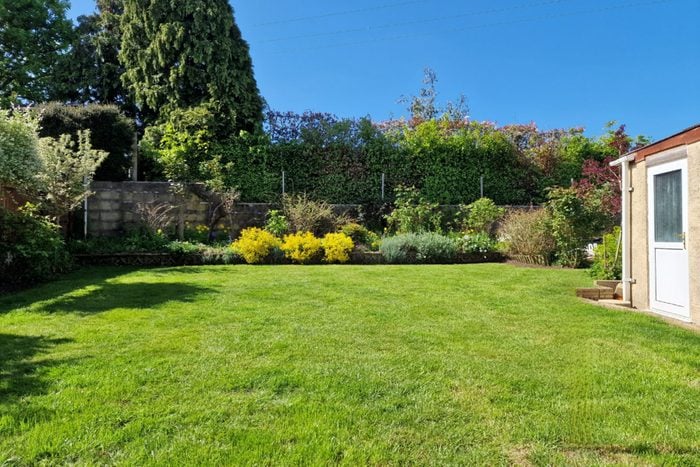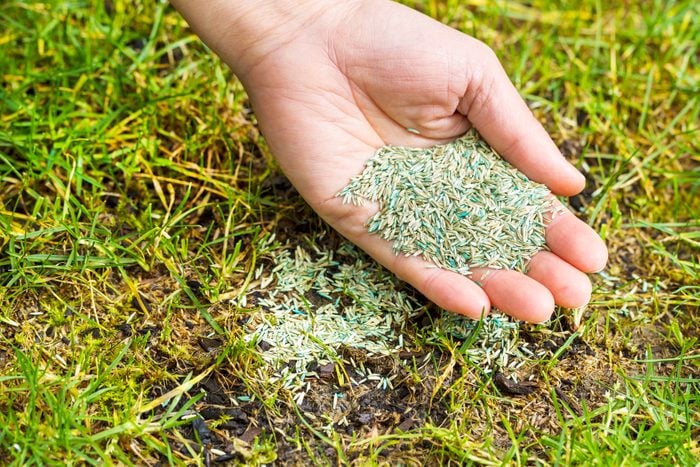
Don’t Plant the Wrong Types of Grass
To grow a green, healthy lawn, be sure to plant the right type of turfgrass for your location. Some grasses can withstand dry summer heat, while others tolerate harsh winters.
To avoid this common lawn care mistake, plant cool season grasses like Kentucky bluegrass and red fescue in northern states. Bermuda grass, centipede grass and other warm season grasses do best in warmer areas.
Growing grass can be tricky, so make sure to start with the right grass seed for a better chance at success.
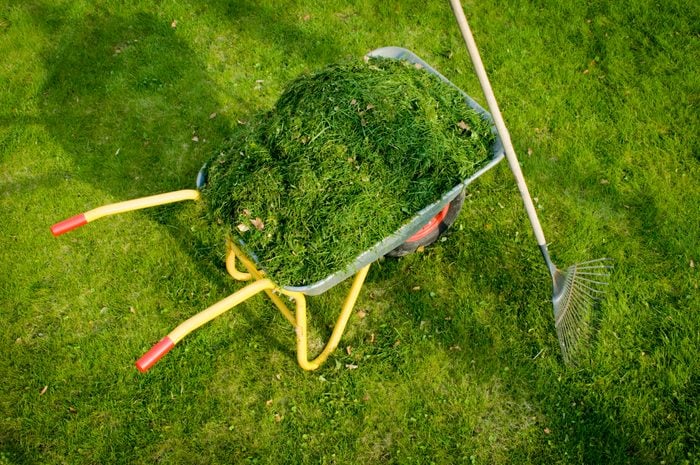
Don’t Remove Grass Clippings
Leaving grass clippings on the lawn after you mow can cause thatch problems, right? Well, that’s not entirely true. It turns out grass clippings can actually help with the overall health of your lawn. “Let the clippings fly if cutting regularly,” Cameron says, to add nutrients.
While grass clippings can benefit your lawn, they can also be too much of a good thing. I always bag my clippings if my grass is long to avoid leaving clumps of clippings behind that can damage grass.
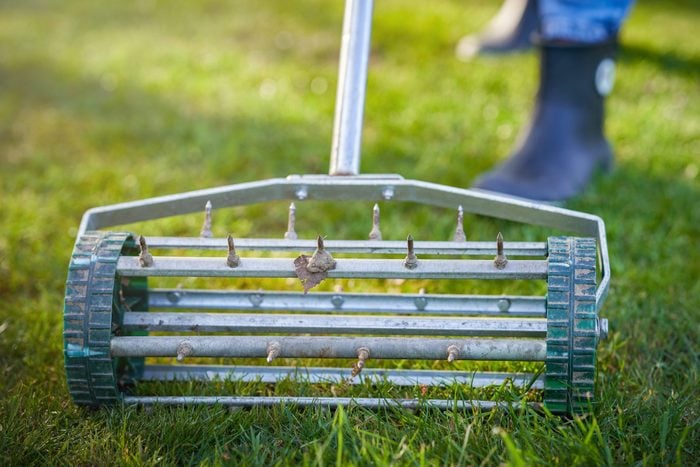
Don’t Forget About Aeration
Over time, a lawn’s topsoil gets compacted, making it difficult for air, water and vital nutrients to penetrate to the grassroots.
To restore healthy soil conditions, loosen and aerate the lawn. “It provides many benefits, including alleviating compaction, managing thatch, [and] improving water, oxygen and nutrients to the root zone,” Cameron says.
Rent a power core aerator, available at most rental centers and home improvement stores.
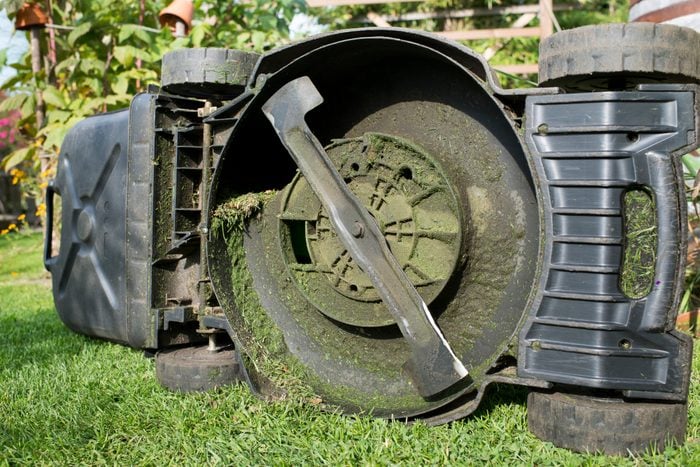
Don’t Use a Dull Lawn Mower Blade
Dull mower blades rip through the grass blades instead of slicing them cleanly. This leaves grass stressed and more prone to disease. You can always tell a lawn that’s been mowed with a dull blade because it looks brown on the top. This symptom on my own lawn prompted me to learn how to sharpen my mower blades.
Be sure to sharpen your mower blade at least three times each season to keep your lawn in good shape. “A sharp mower blade is key to a healthy lawn,” Castillero says.
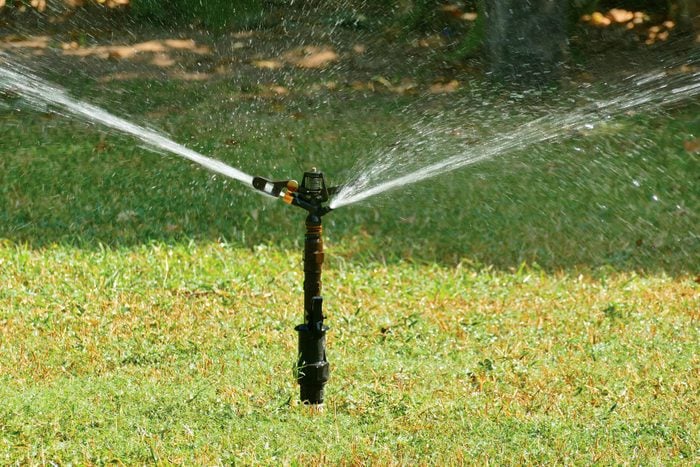
Don’t Water Every Day
One of the more common lawn care mistakes (and one I was guilty of!) is watering every day. This mistake can cause your lawn to develop shallow roots. Frequently watered lawns actually require more water and are more vulnerable to dry spells. Deep watering makes your lawn healthier and more drought-tolerant.
Instead of watering every day for 15 minutes, choose one day a week to water your lawn for an entire hour. Castillero says to aim for one inch of water each week. Read on to learn how to test soil moisture.
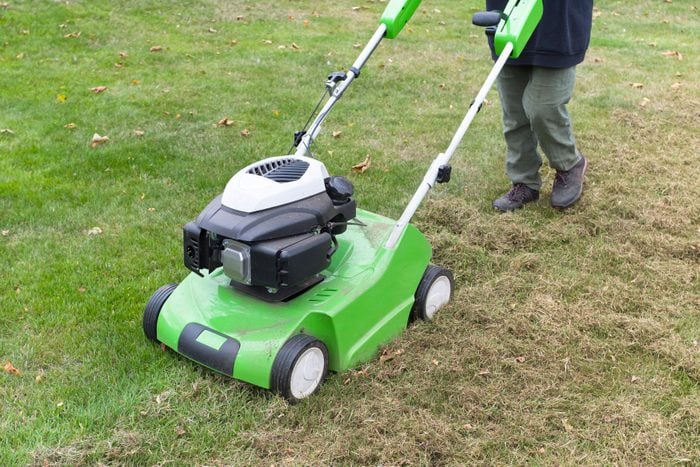
Don’t Forget the Dethatcher
Thatch is a layer of decomposing material that accumulates at the soil surface over time. Too many grass clippings on your lawn creates thatch over time, according to Cameron. It can build up and virtually choke your lawn to death.
If your lawn has thatch buildup of 3/4-inch or more, it’s time to dethatch your lawn. Rent a dethatcher from a home improvement center or manually dethatch with a dethatching rake.
Castillero recommends early spring as a great time to dethatch your lawn.
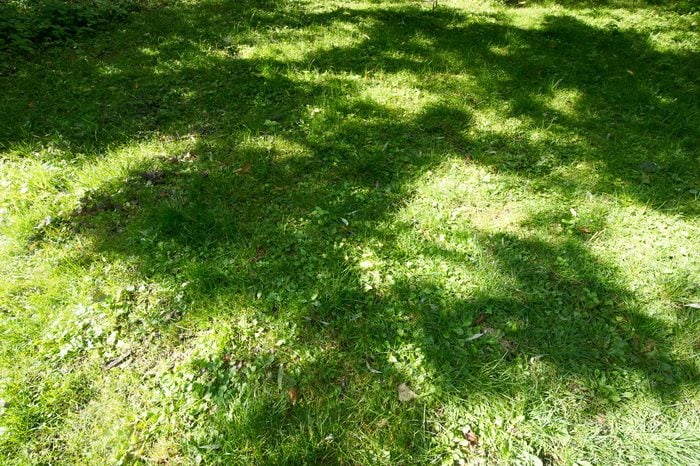
Don’t Give Up on Shady Areas
Growing grass under shade trees isn’t easy, but one key to success is knowing what grass species grows in the shade and the planting method for your region. In cool-season areas, you’ll get better results with seed than sod. Sod is grown in wide-open fields under conditions that favor sun-loving grasses. I’ve always had better luck growing grass in shady areas with seed where I live in New England.
Choose red and tall fescues for shady areas in Northern zones. Garden centers will have grass seed mixes formulated for shade. Late summer and mid-spring are the best times to establish cool-season grasses in shady areas
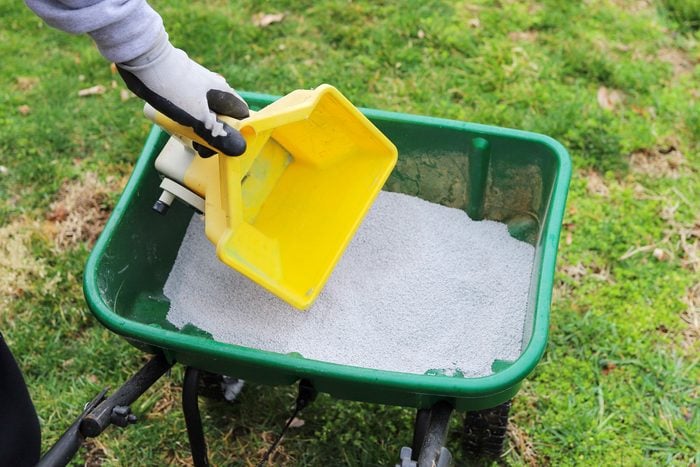
Don’t Fertilize Shady Areas More
People tend to make this lawn care mistake because the grass in shady areas is struggling. But that just kills it faster!
Sunny and shady sections of lawn have different water and fertilizer needs. The shady-area grass needs less fertilizer than sunny areas. When you go into shade, shift the controls on the spreader, so you’re spreading about half the amount.
“You can burn your lawn,” Cameron says. “Read the labels of materials you’re using carefully and have properly calibrated equipment.”
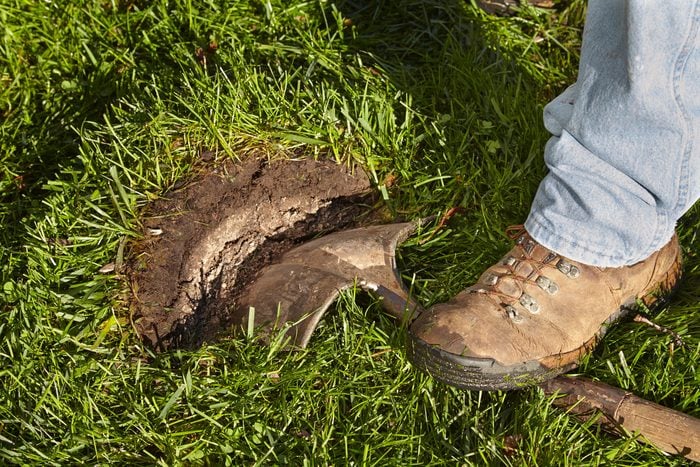
Don’t Forget to Check Soil Moisture
A well-hydrated lawn is key for a healthy, green lawn. Avoid this lawn care mistake by verifying how much water is actually reaching the grassroots.
After an extended warm, dry period, water your lawn for 30 minutes. Turn off the water and push a shovel into the lawn. Tip the shovel forward to expose the soil and see how deep the water has penetrated. Your goal is to run the sprinkler until the water penetrates three to four inches into the soil.
If the water has not penetrated far enough, adjust watering time accordingly for optimal soil hydration.
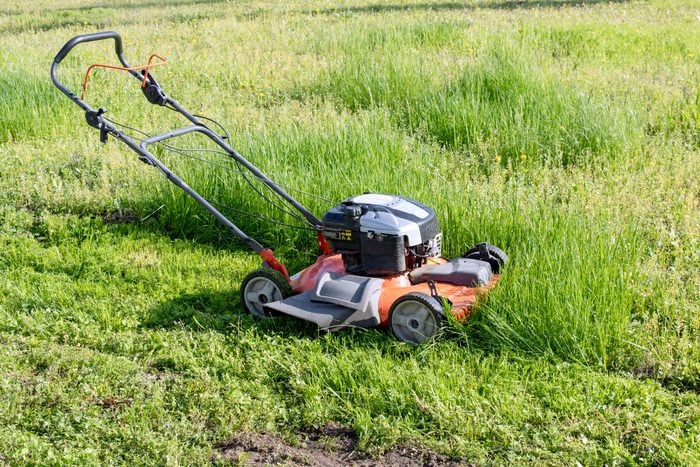
Don’t Wait Too Long Between Mowing
If you came back from a vacation and the neighbor kid neglected to mow the grass, don’t try and mow it all in one day. Cut off some of the length, then wait a couple of days and mow again. This will cause less stress on the grass.
You may need three passes depending on how long the grass grew. To avoid stressing the grass, “Don’t take off more than 1/3 of leaf blades,” Cameron says.
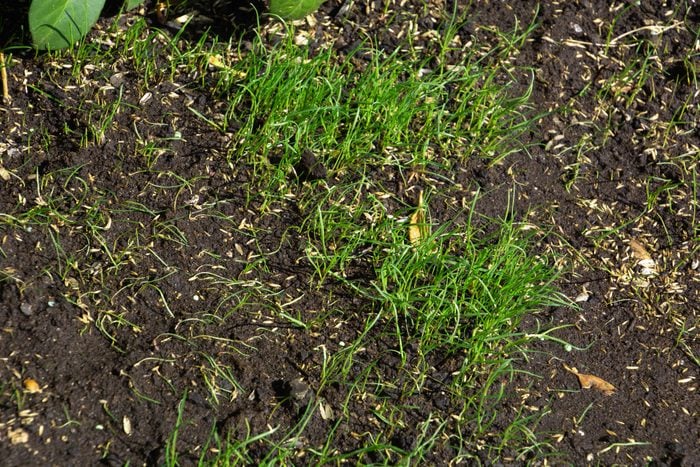
Don’t Skip Reseeding the Lawn
If your lawn is a mix of weeds and bare spots, it might be time to start over and reseed. Reseeding involves removing all existing grass and weeds and planting new grass seed. I reseeded a large section of my lawn after a few years of trying to improve it with little results. Reseeding ended up being the best option to grow a thick, healthy lawn finally.
If you have an average-size lawn, this can be done over the course of a weekend or two. Once your reseeding work is done, be prepared to keep the soil damp with daily watering for the first month or so.
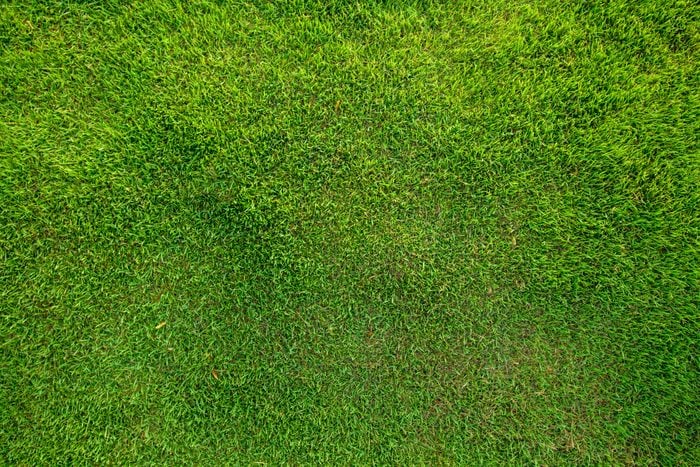
Don’t Cut Grass Too Short
There is an optimal height to cut grass for every grass type, and you are better off cutting it on the high side of that height. Each grass blade is a food factory of the plant. Short blades can’t generate as much food as long blades.
Long blades also shade and cool the soil. “In cooler months it’s okay to cut a little shorter, but cutting it short in summer months puts additional stress on the plant,” Cameron says, which can burn or kill your grass.
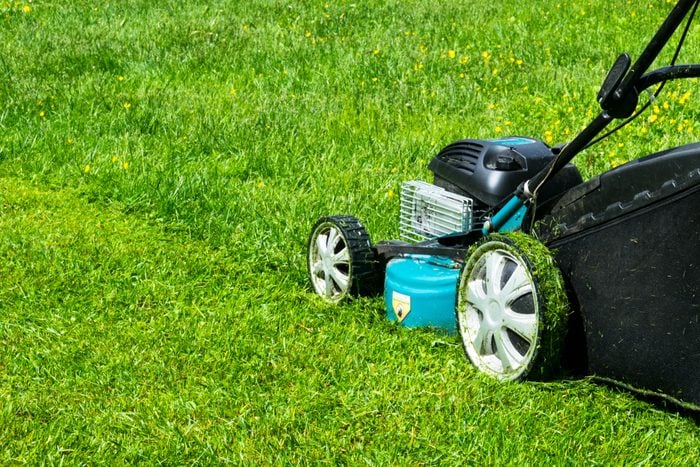
Don’t Mow in the Same Direction Every Time
It’s easy to fall into a routine as you mow your lawn week in, and week out over the course of a summer. But try not to make your lawn mowing routine too repetitive. Instead, mow in a different direction every time: front to back, back to front, diagonal, etc.
Repeatedly mowing the exact same way will cause the grass blades to grow at an angle, and you may develop permanent tracks from the mower wheels. I learned this the hard way when I bought my first home. After a summer of mowing I had stripes from the mower wheels embedded in the grass.
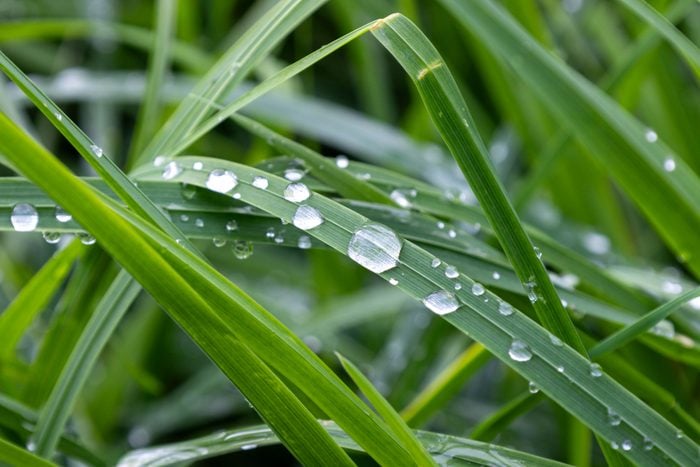
Don’t Mow Wet Grass
While it may be tempting to mow your grass when it’s still wet, Castillero cautions against it. “Don’t cut when it’s wet,” he says. “It can damage your equipment and leaves clumps of clippings that can leave burn spots on your lawn.”
If that’s not reason enough, mowing wet grass can cause the mower wheels to leave ruts in your yard, and the wet grass will carpet the underside of your mower deck with a thick mat that’s a pain to clean.
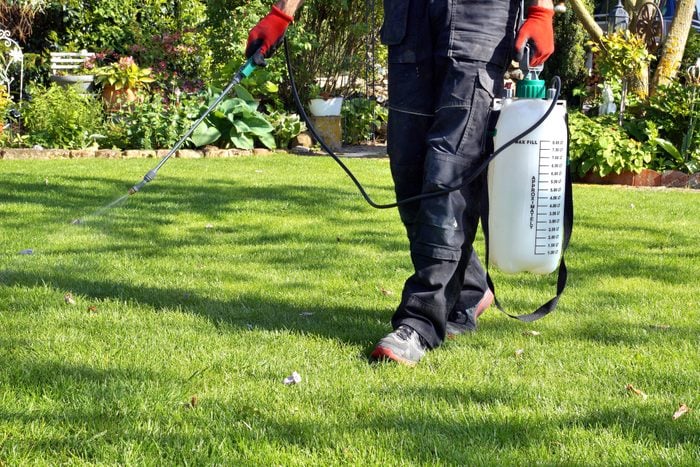
Don’t Use Broadleaf Herbicides in Extreme Temperatures
To maintain a weed-free landscape, you must kill the weeds when they’re growing. That’s because herbicides are absorbed through the leaves and then sent throughout the rest of the plant.
When the weather is too cool, the weed isn’t growing and the herbicide won’t be absorbed, so the chemical isn’t as effective. Too hot, and the herbicide will stress the grass. The product directions will give you the best temperature range.
Apply herbicides when rain isn’t forecasted; a soaking will just rinse off the herbicide before it can do any good. This is crucial, as I once spread a large amount of expensive fertilizer right before a rainstorm. When the rained stopped, it had all washed away.
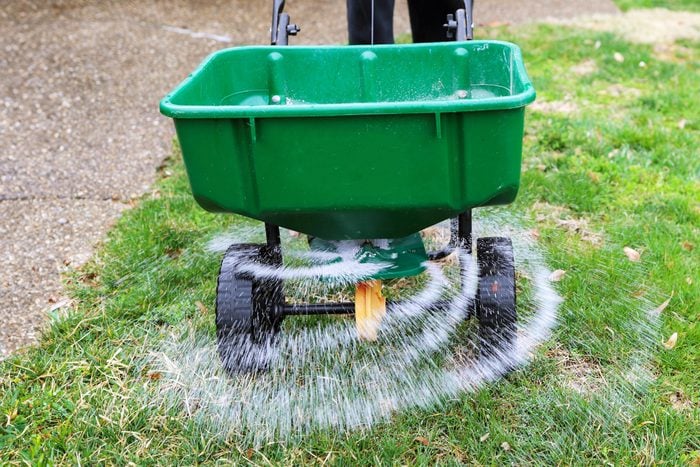
Don’t Overfeed
When fertilizing your lawn be careful not to apply too much fertilizer, especially in sandy soils. That is because a good portion of it will leach through the soil and make its way into groundwater, lakes, streams and wetlands.
Lawn grasses only need a certain amount of food. More isn’t always better. I learned this lesson as a novice homeowner. Believing that more fertilizer would make my lawn that much greener. Instead, I scorched and even killed sections of my lawn by overfertilizing.
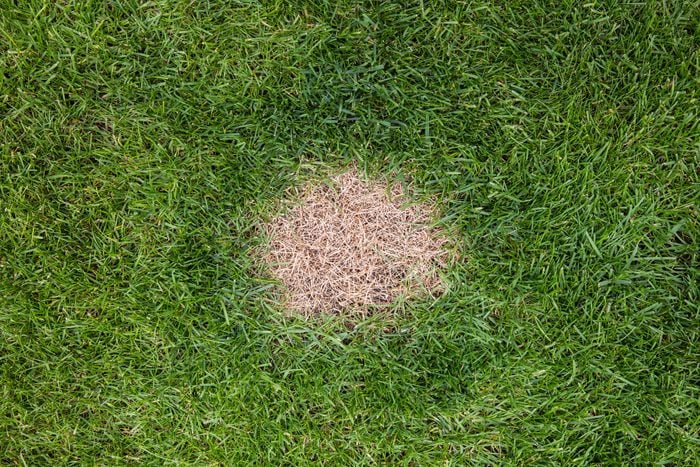
Don’t Ignore Pet Areas
Dog spots are round, brown spots on your lawn about four to eight inches in diameter with dead grass in the middle and encircled by dark green grass. Often caused by a winter’s worth of animal urine, they’re most apparent in the early spring when dormant grass first begins to turn green again.
You have to replant your grass; it won’t come back on its own. But first, you have to dilute or remove the caustic urine from the soil by thoroughly soaking the area with lots of water.
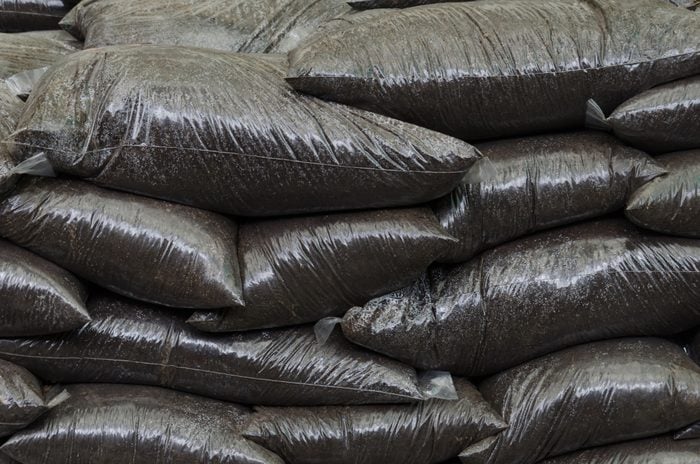
Don’t Discount Compost
Top-dress your lawn with high-quality compost to bring depleted or damaged soil back to life.
To apply compost, spread it over your lawn with a shovel, aiming for a layer that is 1/4 to a 1/2 inch thick. Then work it into the turf with a rake. It’s best to do this after aerating. I used this technique to improve an area of my backyard with poor soil. It took a treatment or two, but over time it did improve the quality of the soil and the lawn.
Most garden centers sell bagged compost. However, you’re better off buying in bulk to cover an entire yard.
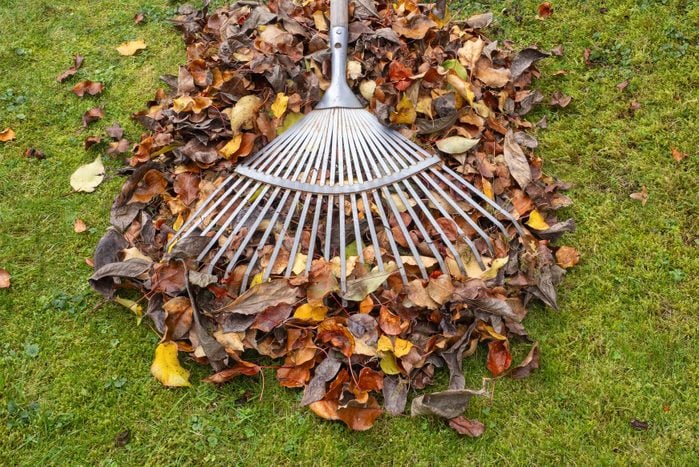
Don’t Remove ALL Fallen Leaves
Small amounts of decomposing leaves are actually great for your lawn. Leaves have organic matter in them that works as a natural fertilizer, helping your grass to grow the following year.
According to Bauer, fallen leaves can even suppress the growth of weeds. He recommends mulching leaves by using a lawn mower with a mulching blade.
About the Experts
- Osmar Castillero is the owner of Blades Landscaping Services, a lawn care and maintenance company in Lowell, Massachusetts. He has over ten years experience in the industry.
- Matt Cameron is the owner of CMS Landscaping, a full-service lawn care and irrigation company in Holyoke, Massachusetts. Matt has 15 years of landscaping experience.
- Sam Bauer is a Professional Turf Specialist for Ramy Turf Products. He also serves as the Executive Director of the NorthCentral Turfgrass Association. He has over fifteen years experience in lawn and turf care.

